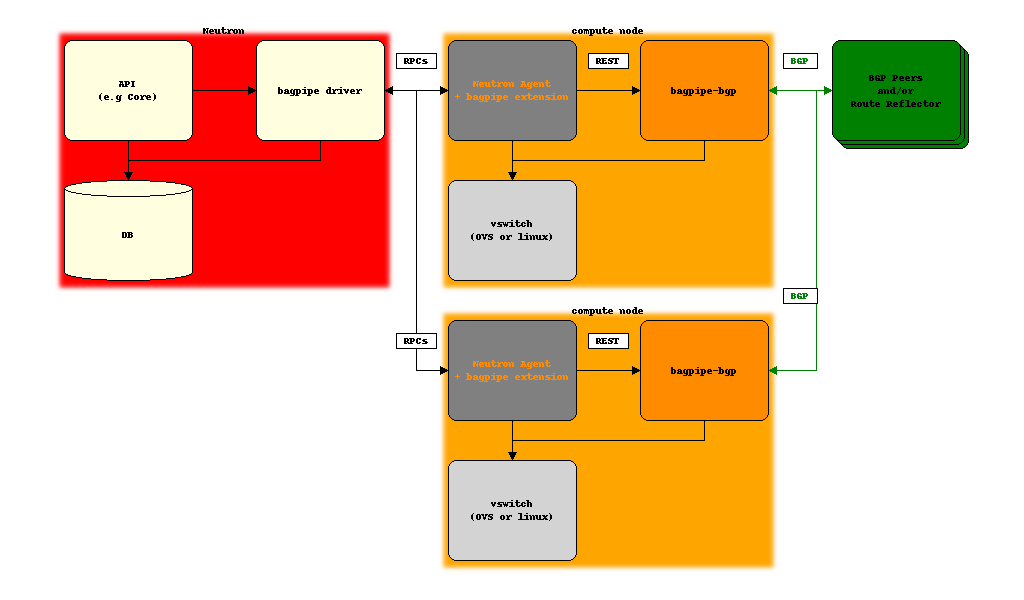Design overview¶
The common design choices underlying bagpipe architecture are:
on Neutron server, allocate and associate BGP VPN constructs necessary to realize Neutron API abstractions: network, router, service chain, BGP VPN interconnection, etc.
pass the information about these BGP VPN constructs to the compute node agent via Openstack Neutron message bus (typically, but not necessarily RabbitMQ)
on compute node, a bagpipe extension of the Neutron agent (OVS) passes the information to the local implementation of BGP VPN extensions (BaGPipe-BGP) that will advertise and receive BGP VPN routes and populate the dataplane accordingly
depending on the use cases, BGP VPN routes are exchanged between compute nodes, between compute nodes and DC gateway IP/MPLS routers, or both ; the strategy to scale this control plane will depend on the deployment context but will typically involve BGP Route Reflectors and the use of the RT Constraints pub/sub mechanism (RFC4684)
traffic is exchanged using an overlay encapsulation, with VXLAN as the typical choice for vswitch-to-vswitch, and MPLS-over-GRE or MPLS-over-UDP (future) as the target for vswitch-to-DC-gateway traffic

